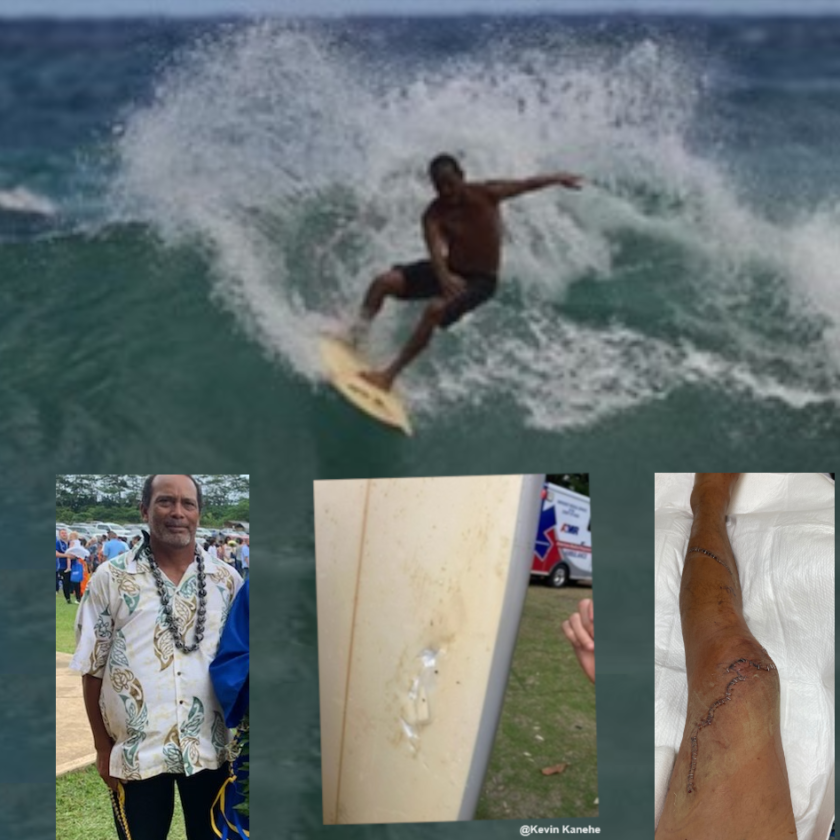When Tiger Beach is ON—it’s the world’s greatest shark dive.
—Eli Martinez, Shark Diver Magazine
I kneel on the ground of a sandbar at a six meter depth (19 ft) in the Bahamas crystal clear water, visibility approaches about 30 meters (98 ft). In front of me are roughly 20 lemon sharks. With a length of about three meters (10 ft), the lemons are quite impressive.
When you dive with them for the first time, you might feel a bit uncomfortable, because these sharks do not know anything like a safety distance. They partially patrol past the divers at arm’s length.
After a couple of dives, a kind of acclimatization takes place and the frequent, almost obtrusive shark encounters leave me more relaxed. Still it seems I have to clarify the right of way with them. Just keep your composure, I tell myself.
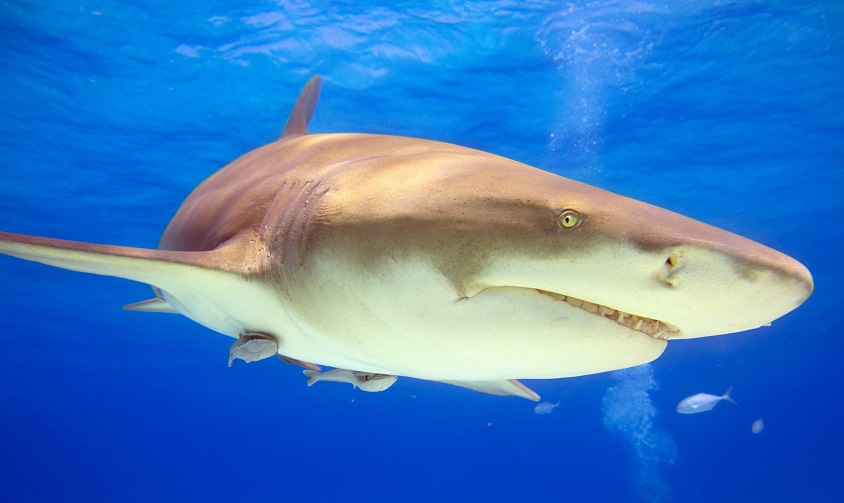
In general, lemon sharks are not considered particularly aggressive, but whoever thinks they are completely harmless should have a talk with Al Brenneka. The head of the Shark Attack Survivors was attacked by a lemon shark.
He was surfing at Delray Beach, Florida in November 1976. He lost his right arm, both lungs collapsed and he spent three days in coma, but he survived the attack. Nevertheless, the lemon sharks look like impetuous ruffians.
I wait for the real infamous bats—the tiger sharks! The tiger of the sea is a generalist and eats everything. Even cement bags have been found in the stomachs of tiger sharks, along with car tags, preserves, rubber tires and plastic bottles.
A few years ago, a large female tiger shark named Emma had even been caught carrying the camera of a diver away with the diver still dangling onto it. Maybe she has a deal with an eBay dealer, who knows?
Tiger Beach is more or less a huge, kilometer-wide (.5 mi) sandbar. The pleasant thing is this dive site is very shallow and easy to dive having a maximum depth of twelve meters (39 ft), so that increased air consumption can be attributed exclusively to an increased adrenaline level.
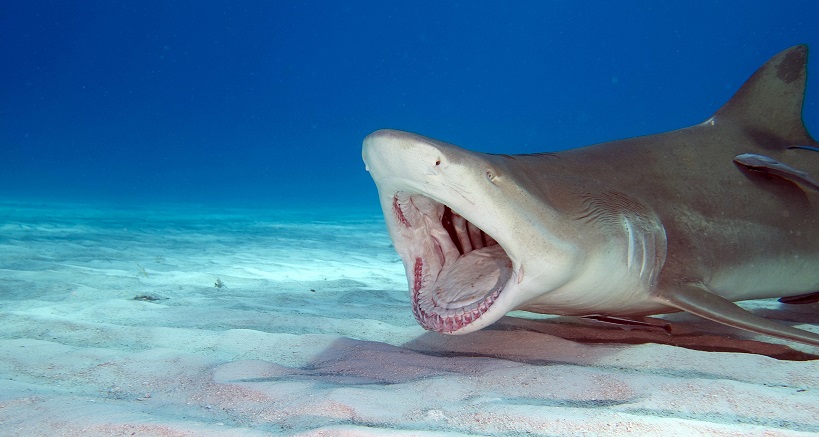
Why they call this place a beach is not quite clear to me—there is no beach to lie on. The word was coined by big game fishermen who hunted tiger and lemon sharks in this place.
Suddenly the sky darkens; a great shadow falls upon me. Have clouds obscured the sun? I look up and see a giant fish, weighing about 1,000 kilos (2,000 lbs)! Goosebumps crawl over my body, because I know what that means . . . tiger sharks.
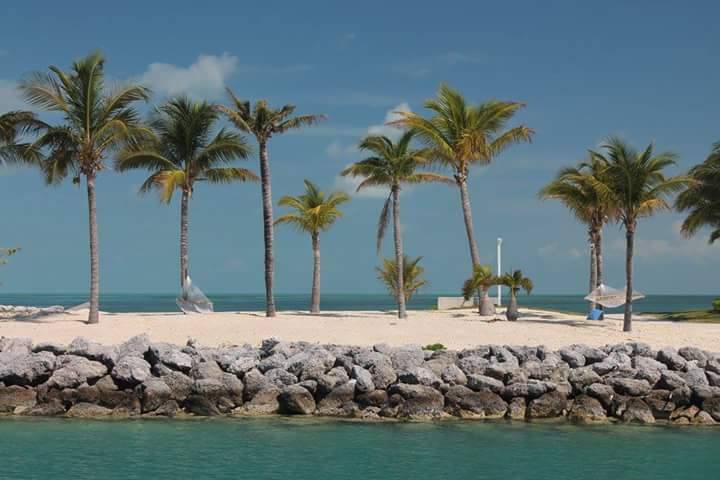
The islands of the Bahamas look like a chain of precious jewels that are dipped on a surface of more than 13,000 square kilometers (5019 sq mi) of the clear, tropical ocean at the tip of the Caribbean. Wherever you look, blue coves illuminate and you see aspirin white beaches. Of the more than 700 Bahamas islands, only 30 are inhabited.
The Bahamas consist of the islands and more than 2,400 coral reefs, the so-called Cays. The island group got its name by the Spanish conquerors. They called the waters around the islands of Baja Mar (Spanish for shallow sea), which later became the Bahamas.
My journey takes me to the Grand Bahama Island with the 15 meter (49 ft) long sailing yacht Bye Polar from Miami. It is one of the northernmost islands of the Bahamas, and is located about 90 km (56 mi) off the coast of Florida.
Here you have some beautiful beaches to choose from including imaginative names like Xanada Beach, Taino Beach, Fortune Beach or Gold Rock Beach. An access road on Grand Bahama leads past the “Pirates of the Caribbean” film locations.
For 3,000 Euro ($3,164) I sleep a week on less than two square meters (21 sq ft) next to two snoring Americans. We share a shower and a bathroom with seven passengers and two crew members, and eat frozen cakes with spray cream.
I have a wife and two kids. What the hell am I doing here? Still, I do not think about the price for a second. For this money, they bring you back alive. This is no normal diving vacation and I do not want to play Russian roulette with the devil.
Clownfish, seahorses and Spanish dancers stand high in the favor of many divers. But honestly, for really exciting dives, the nice little stuff is rather unsuitable. Every now and then you need some adrenaline and there is plenty of it when a giant predator approaches within a few centimeters (inches).
What a normal citizen would call naked horror provides some divers with a big kick. Big hammerhead sharks can be seen in the Bahamas. During the winter months, tiger sharks, lemon sharks with Caribbean reef sharks all year long and longimani (oceanic white tip sharks) on special tours in the spring. Even bull sharks can be seen from September to June!
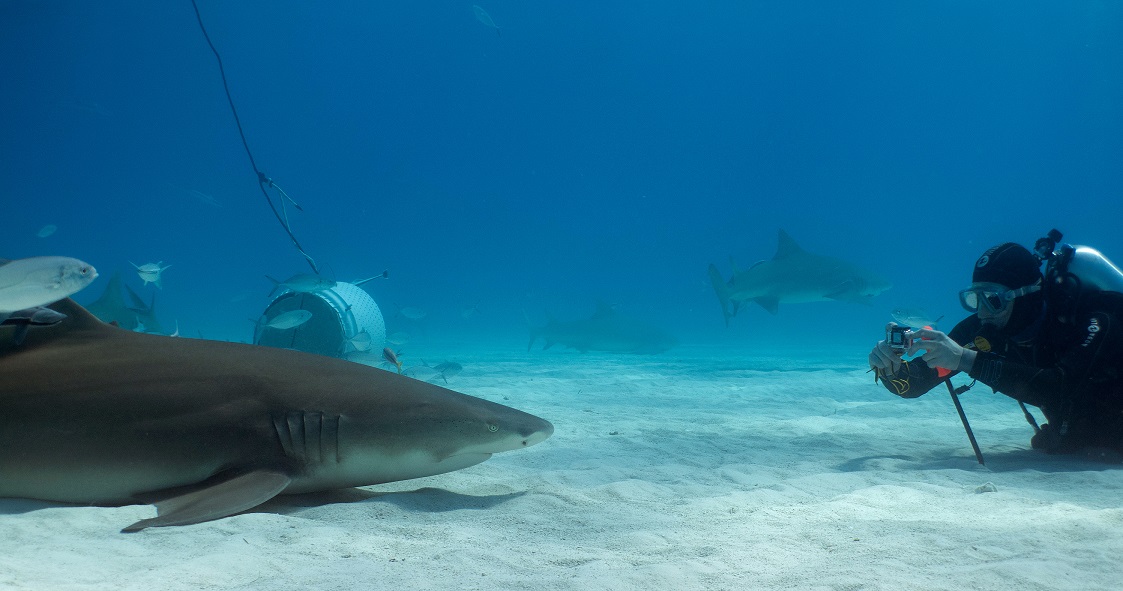
To lure the sharks to the vicinity of the boat, you need to chum the water which means you put a large box with dead fish into the water.
Every diver has to be aware of the fact that the sharks are hoping for food around the boat and that they must adhere to strict rules of conduct to keep the risk of attacks as small as possible!
Since the dive sites are all off the mainland, you sometimes get tricky currents and other difficult diving conditions.
All participants have to bring a well-founded diving experience, but above all you should be so comfortable with diving that you can focus on the sharks.
Apart from diving with the famous great whites in South Africa or Australia, you dive here without a cage. It is important that every person is aware that diving with large sharks is never risk-free. In addition, all liability exclusions must be signed to protect the dive operators.
We are passing several dive sites. The actual highlight of this trip is, however, the absolutely spectacular dive site of Tiger Beach. The place is by its very nature an absolute El Dorado for photographers and filmmakers who receive spectacular templates for stunning pictures and sequences en mass.
Click to read Scuba Diving on Tiger Beach, Bahamas part 2.
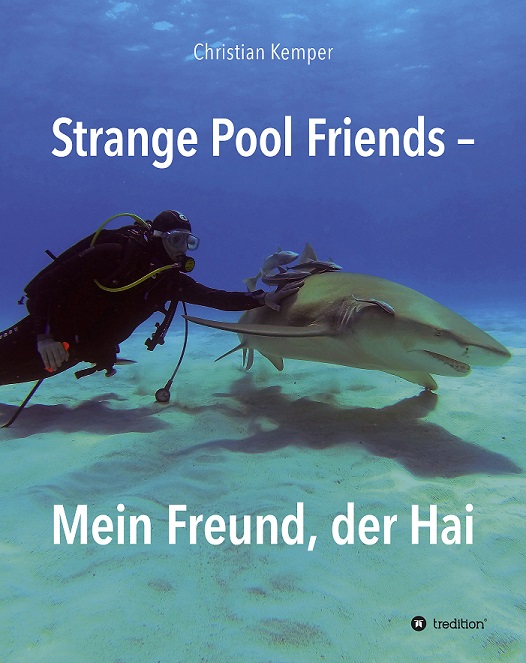
Christian Kemper is a TV journalist from Germany. He has been diving with and studying sharks for more than 20 years. He has written two books about shark attacks, and one book about crocodiles. He is a freelance writer for three of the biggest diving magazines in Germany.
His latest English book is The Fear Beneath and can be found at tredition and Amazon

